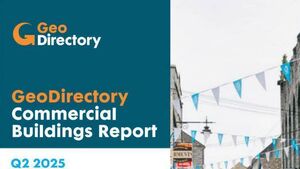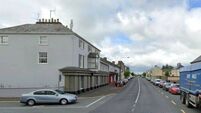Mountmellick has the most number of vacant commercial premises in Laois

Portarlington has the least number of vacant commercial premises in Laois
ACCORDING to the latest GeoDirectory Commercial Vacancy Rates Report, the commercial vacancy rate in Laois was 13.5% in June 2025, which was lower than the national average of 14.6%. Compared to the same period in 2024, the commercial vacancy rate in Laois decreased by 0.5 percentage points.
The analysis, prepared by EY, found that the national commercial vacancy rate reached a new high of 14.6% in June 2025, with a total of 30,800 commercial units classified as vacant across the State.
In total, the commercial vacancy rate increased in 17 out of 26 counties surveyed.
Of the urban areas in Laois surveyed, Mountmellick had the highest commercial vacancy rate (24.3%), while Portarlington had the lowest (11.9%).
Of the 80 main towns and urban areas surveyed by GeoDirectory nationally, Ballybofey, Co. Donegal registered the highest commercial vacancy rate at 33.7%. At the other end of the scale, Carrigaline, Co. Cork (5.1%) and Greystones, Co. Wicklow (5.5%) were the towns with the lowest vacancy rates.
The CEO of GeoDirectory Dara Keogh said: “The national commercial vacancy rate has reached a new high of 14.6% in Q2 2025, the highest level recorded by GeoDirectory, continuing the trend of increasing commercial vacancy experienced in recent years. There are now 30,800 commercial units across the country currently vacant, a reminder that our commercial landscape as well as consumer behaviour is shifting.”
Director at EY Economic Advisory Annette Hughes said: “In Q2 2025, the commercial property vacancy rate rose in 17 out of the 26 counties, continuing a trend of more than half of the counties experiencing an increase in vacancy rates. Overall, the commercial vacancy rate is continuing its upward trajectory at the same time as residential vacancy rates have reached historic lows. This trend highlights the significant challenges and market dynamics commercial businesses have faced in recent years, in spite of the strong overall economic performance of the Irish economy. Evolving shopping preferences and ongoing cost pressures on businesses and households continue to impact the sector, although the extent of their influence will vary depending on factors such as location and sector.”




